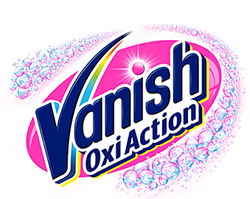Fabrics Decoded
Despite having washed laundry before, nothing can really prepare you for having to deal with an extremely tough stain, no matter what the fabric. Let’s look into the different types of fabrics:

Natural Fibres
Cotton
Cotton is believed to be the most common type of fabric for most clothing today. It is used most commonly on children’s clothes and bedding as it is soft and comfortable for the skin. Cotton is also great for keeping the heat in during cold weather and keeping the heat out during warm weather (with an SPF of seven[1] for a plain white t-shirt).
Cotton is also easy to wash – always check the laundry label but they can usually be washed in a washing machine, and of course, if you have a stain on a cotton item of clothing, Vanish is completely safe to use and can remove stains on cotton.
Mix Vanish Oxi Action Powder with warm water and apply directly to the stained area, and rinse and wash as instructed on the garments care label; this should remove the stain. However, if you want to be extra cautious you could also add an extra scoop into your washing machine with your normal detergent to get the stain out completley.
Silk
Delicate materials such as silk have a different make up to those such as polyester, and silk fibres can react differently when treated with stain removal products and during cleaning[2]. This is why it’s always recommended to read the garment care labels before you attempt to remove stains. When it comes to silk items, detergent alone might not be enough to lift stains, but Vanish Liquid can be used to help treat stains on your silk garments.
Linen
Linen clothes are made from a natural fibre manufactured from the stem of the flax plant[3] and is naturally quite a soft material. As with softer cottons, linen can get damaged if spun too vigorously in the washing machine[4]. The longer a stain is allowed to sit on your clothes, the more difficult it is to remove so, particularly with more delicate fabrics, it is always best to try and remove the stain as soon as possible.
Wool
When looking to remove stains from wool, it is important to always read the product instructions as certain stain removal products may be too strong and cause the wool fibres to shrink[5]. As with linen, woollen clothes can also become stretched and misshapen in a washing machine if you don’t take extra care.
Man-Made Fibres
Nylon
The term Nylon came from New York and London. It is a synthetic fibre that is most commonly used in clothing, sheets and covers and tends to be more durable than natural fibres. Additionally, fabrics made from Nylon are easy to maintain and can get clean and dry without any extra special effort.
Polyester
Polyester has a wide range of uses due to its ability to not become creased as easily as other fabrics – it is extremely strong but at the same time, feels soft to the touch. It is often mixed with other natural fibres as a ‘blended fabric’.
Polyester is easy to wash so don’t worry about throwing it in the washing machine. If you find that you have a tough stain you need to get rid of then you can always combine a pre-treatment (or soaking) with Vanish Oxi Action and wash as usual adding 1 more scoop of Vanish to your laundry load.
Denim
Although denim derives from cotton, it is still technically a man-made fabric. The weft is passed under two or more warp fibres to produce the common diagonal ribbing you often notice on items such as jeans and jackets.
Denim is used at a large scale all over the world as its durability and comfort makes it one of the most fashionable – and practical – fabrics on the market.
Washing
Washing your fabrics separately from other clothes may not only help to ensure they are on the correct wash but also may help to prevent other clothes from transferring colour on to them.
Many items that are classed as delicate may have the ‘handwashing’ symbol on the label. If this is the case, there may be a chance that your washing machine has a ‘hand wash’ or ‘delicate’ option, so it may be worth going through your manual to double check.
It is always important to remember to follow the care instructions on the label for you your clothes but for more information on what certain care symbols mean check out our Laundry Labels: Decoded infographic.
[1] https://www.skincancer.org/skin-cancer-prevention/sun-protection/sun-protective-clothing/
[2] http://laundry.about.com/od/stainremoval/a/caresilk.htm
[3] http://laundry.about.com/od/stainremoval/a/carelinenfiber.htm
[4] https://www.cleanipedia.com/gb/laundry-washing/how-should-i-wash-my-delicates
